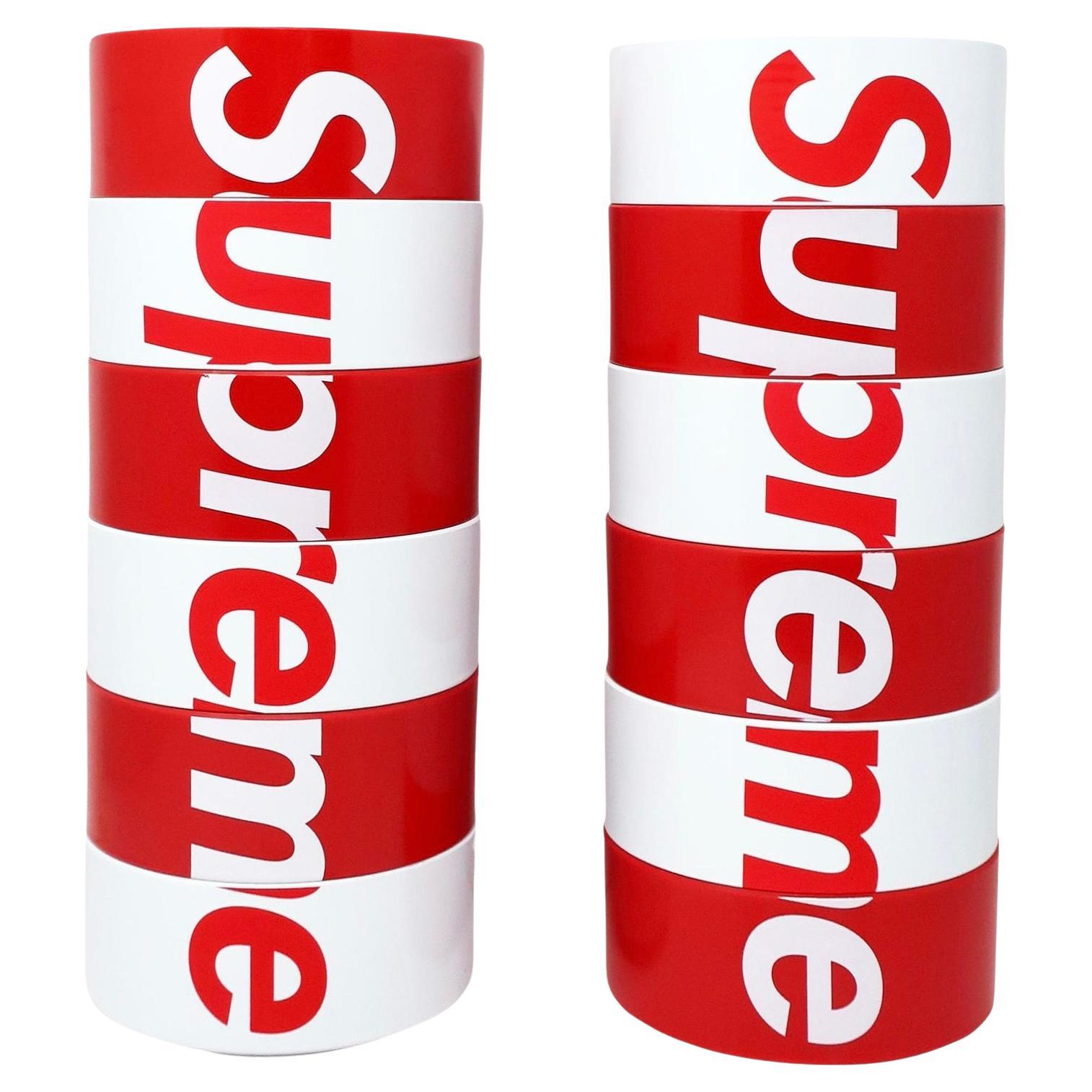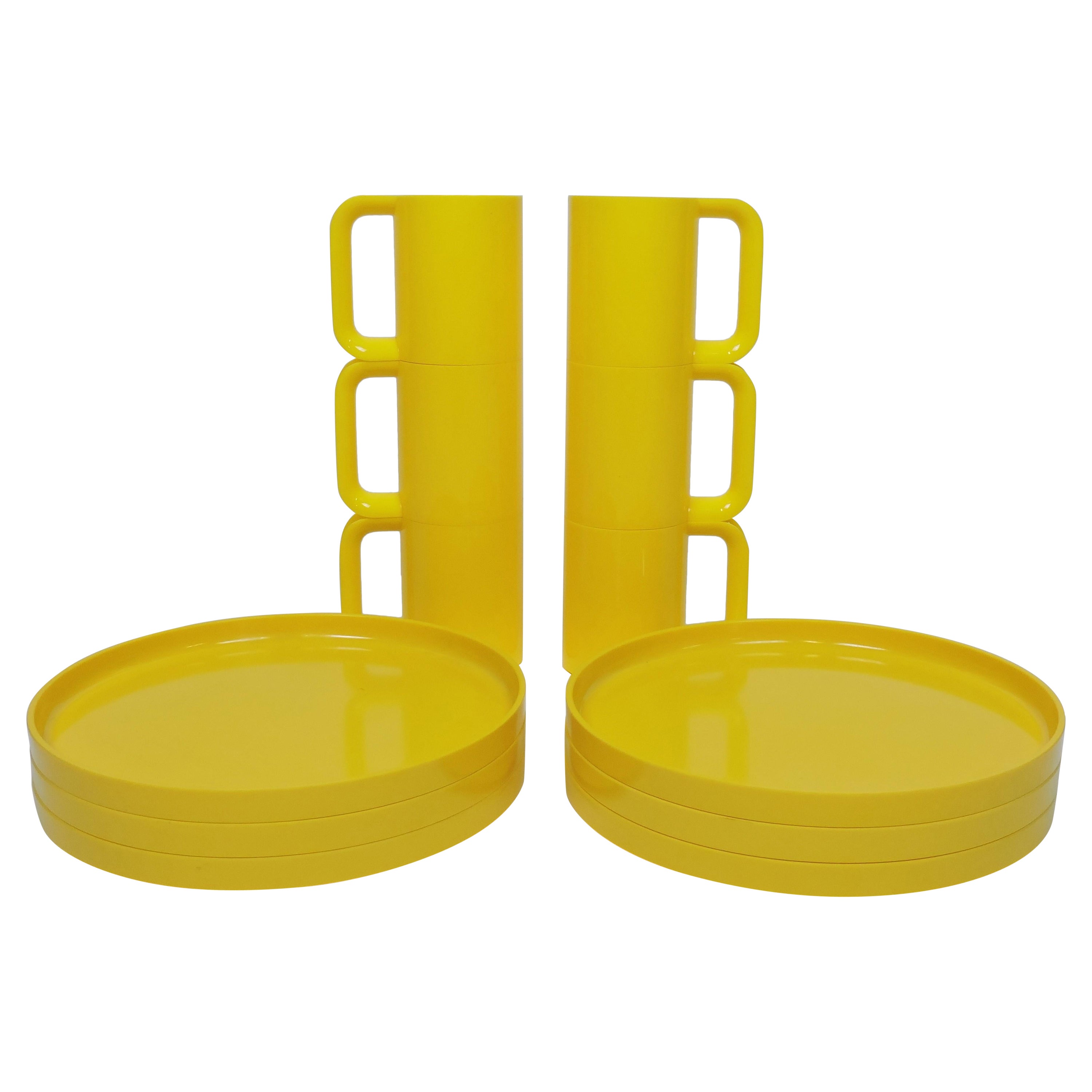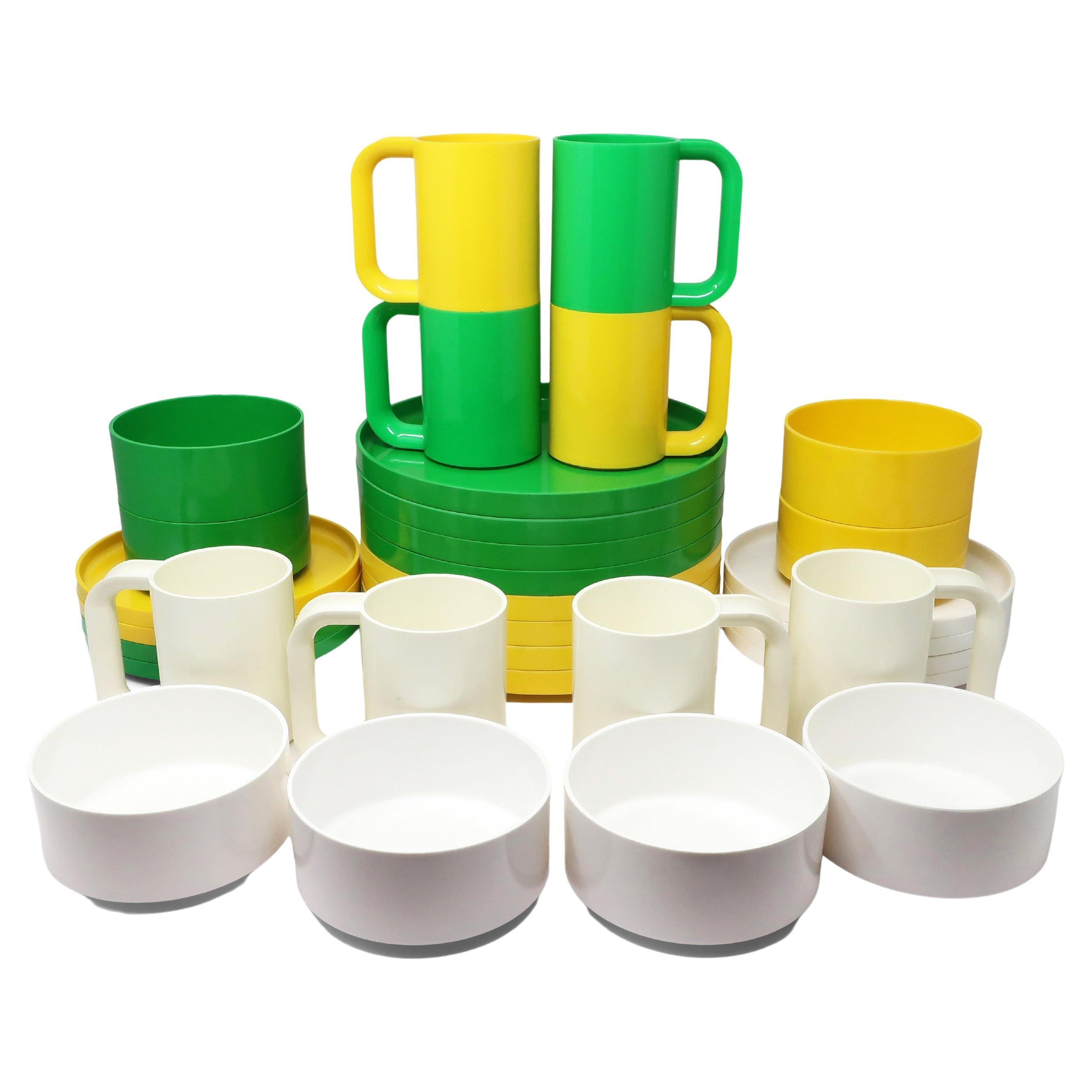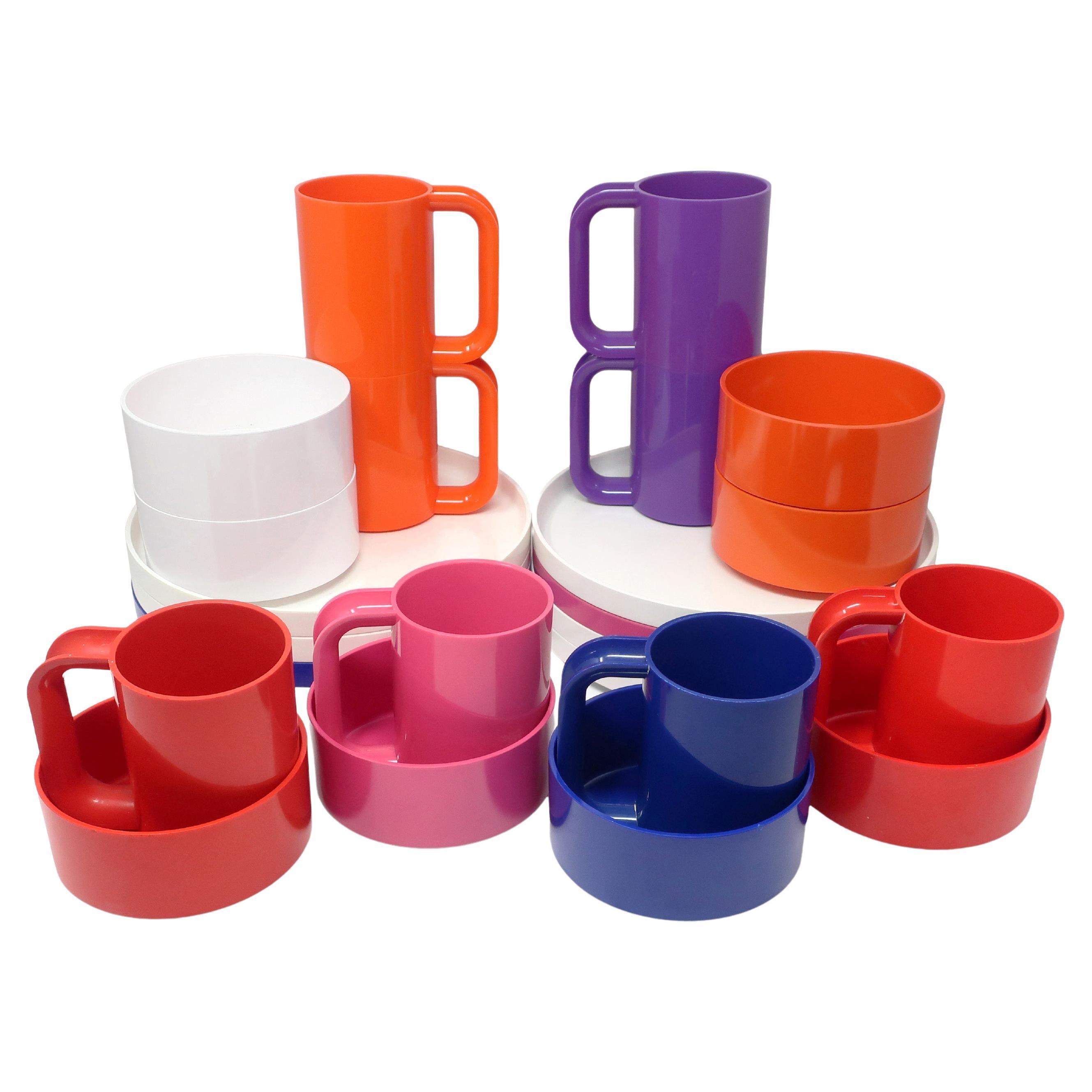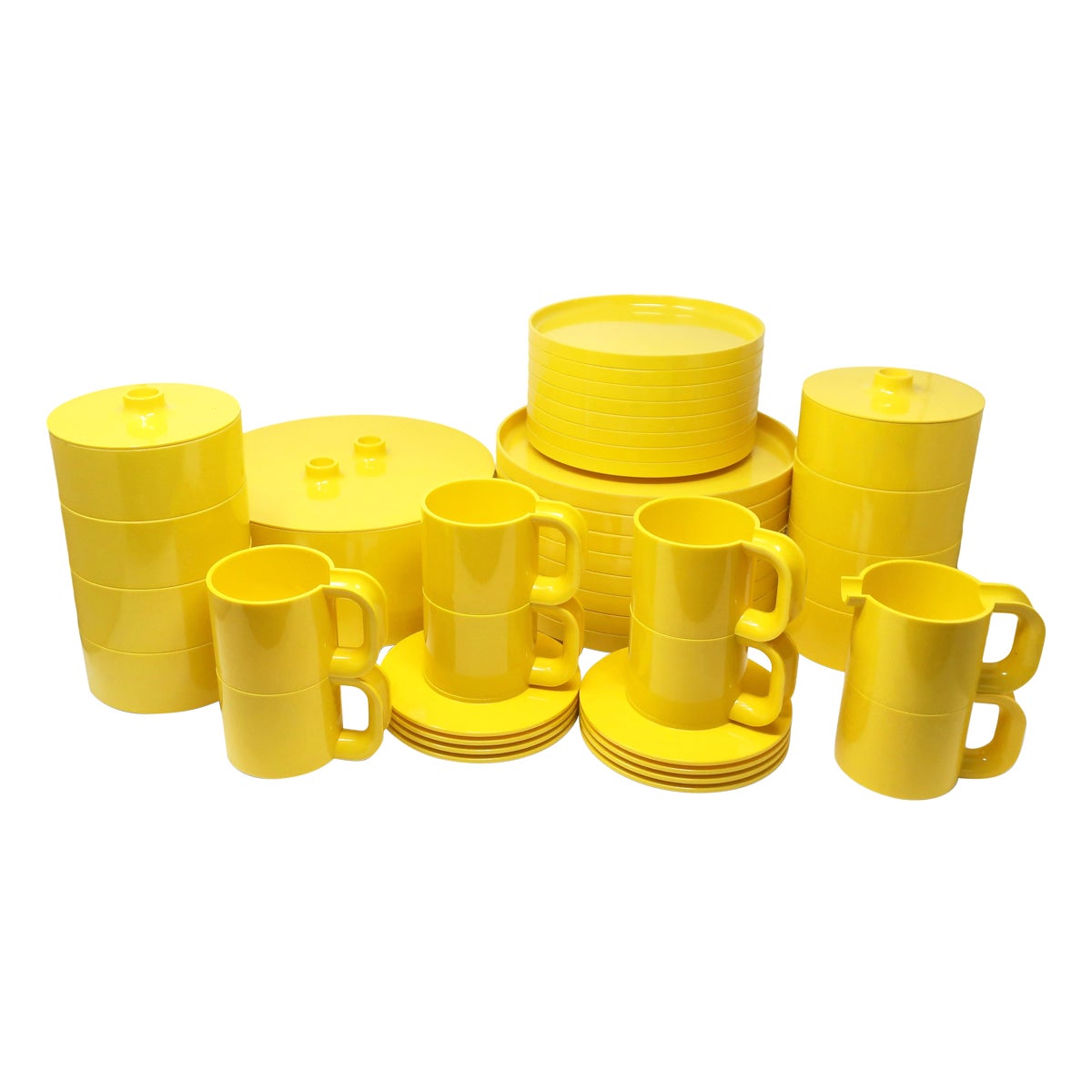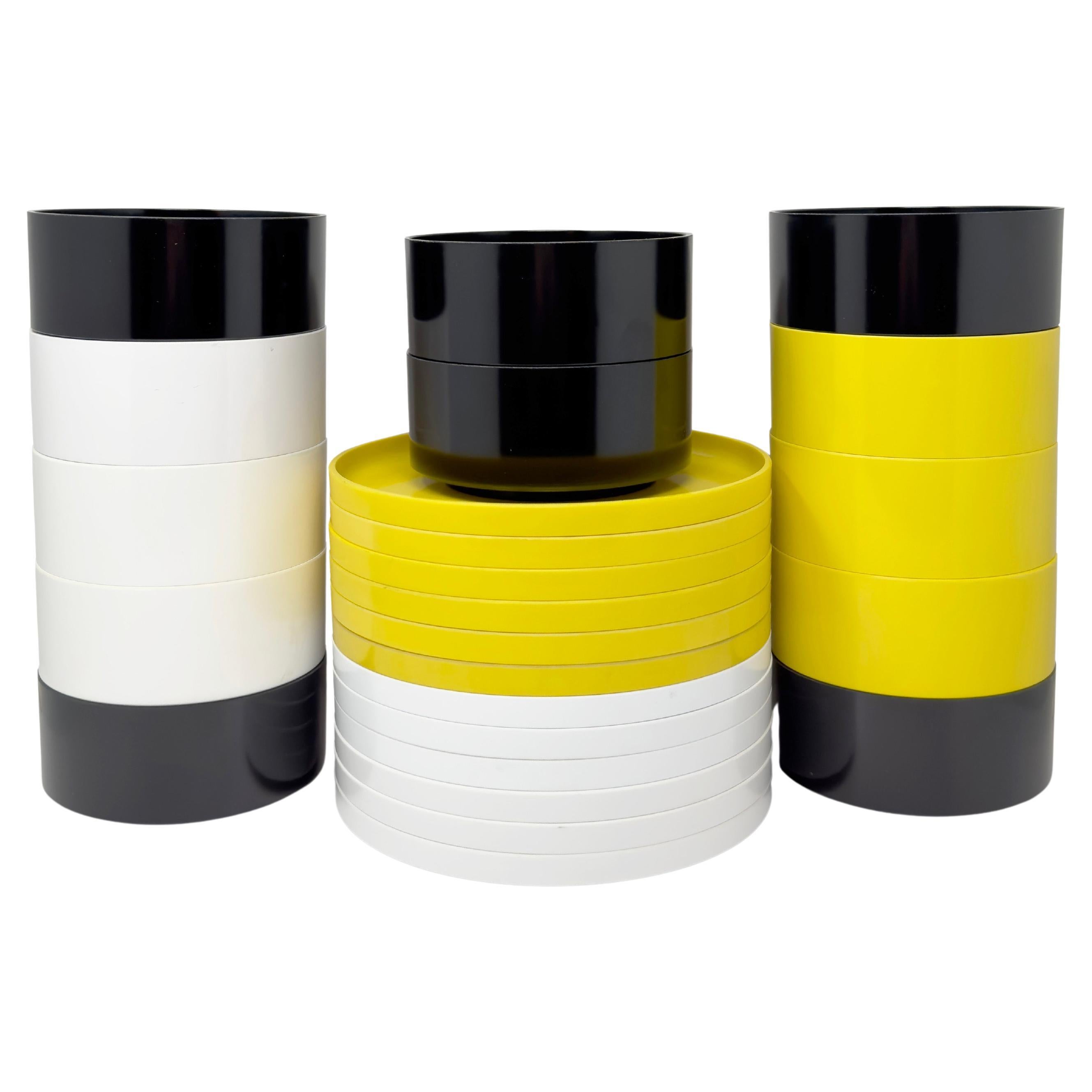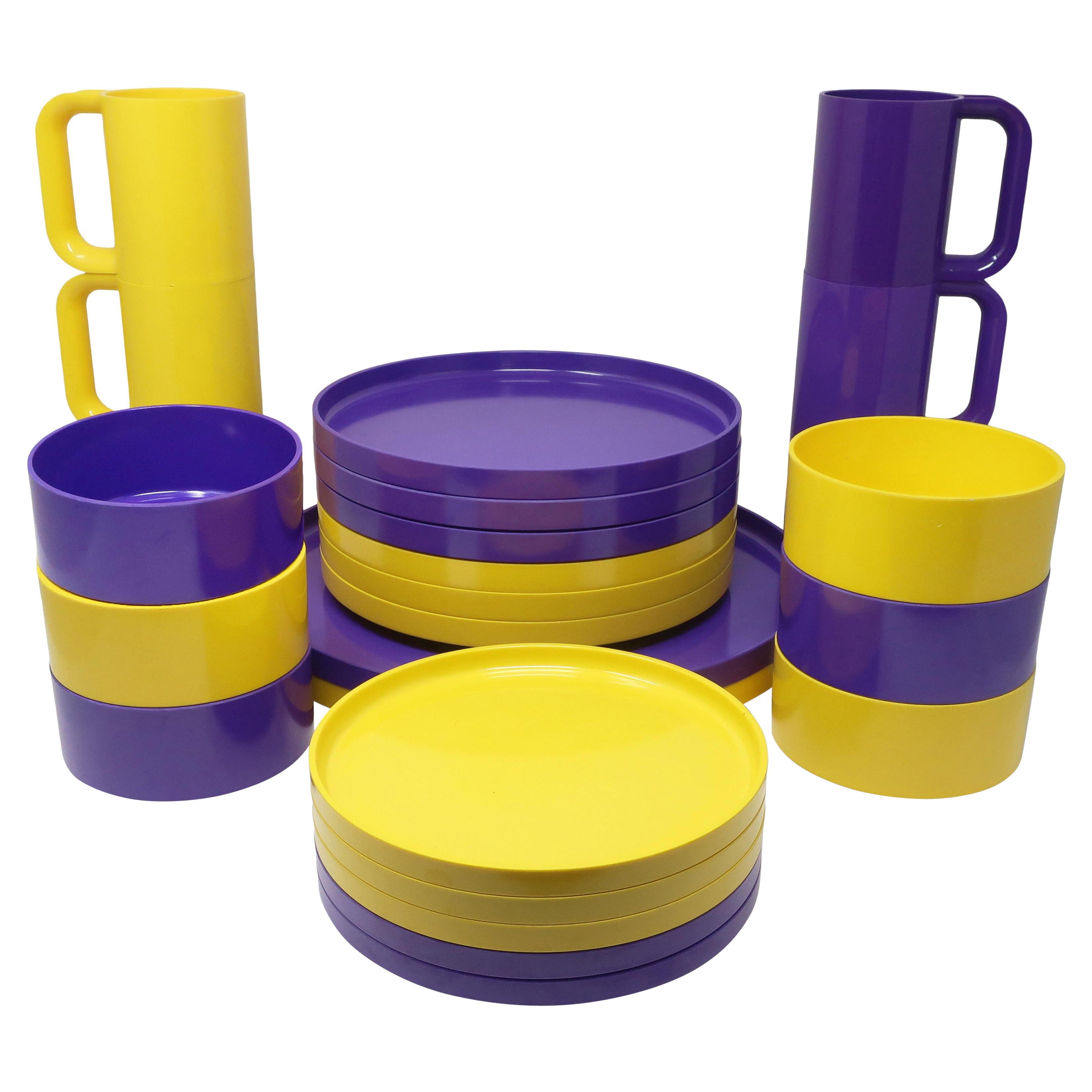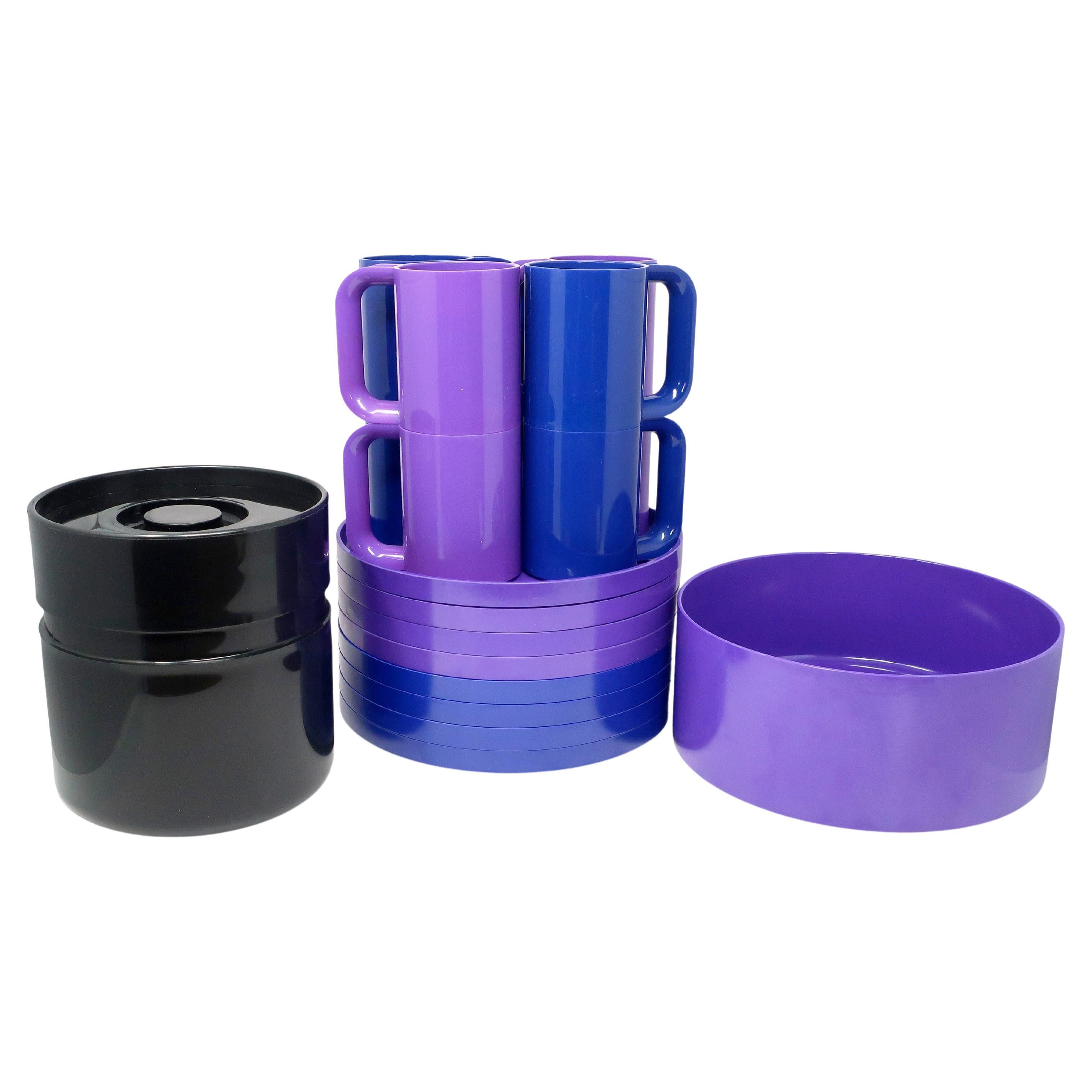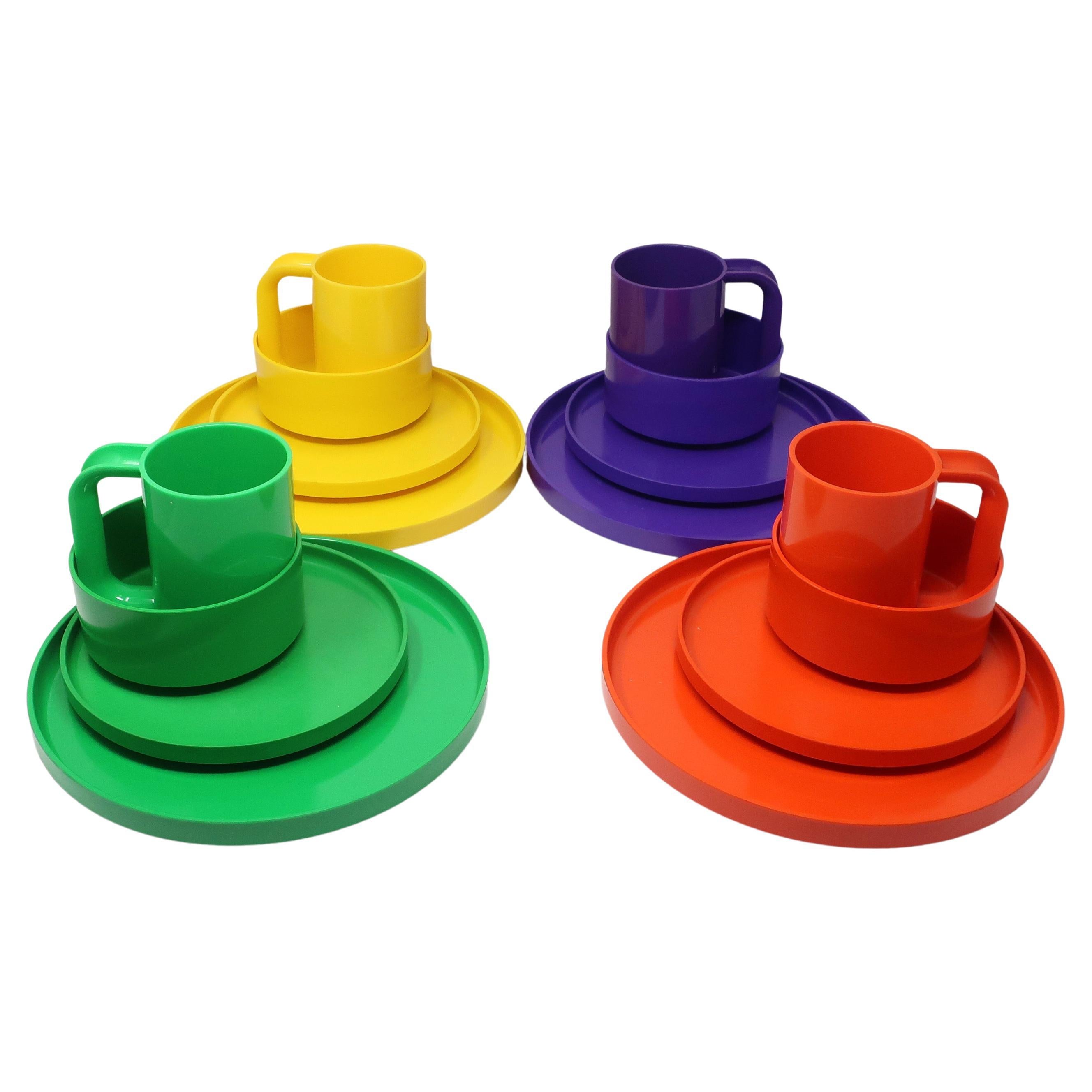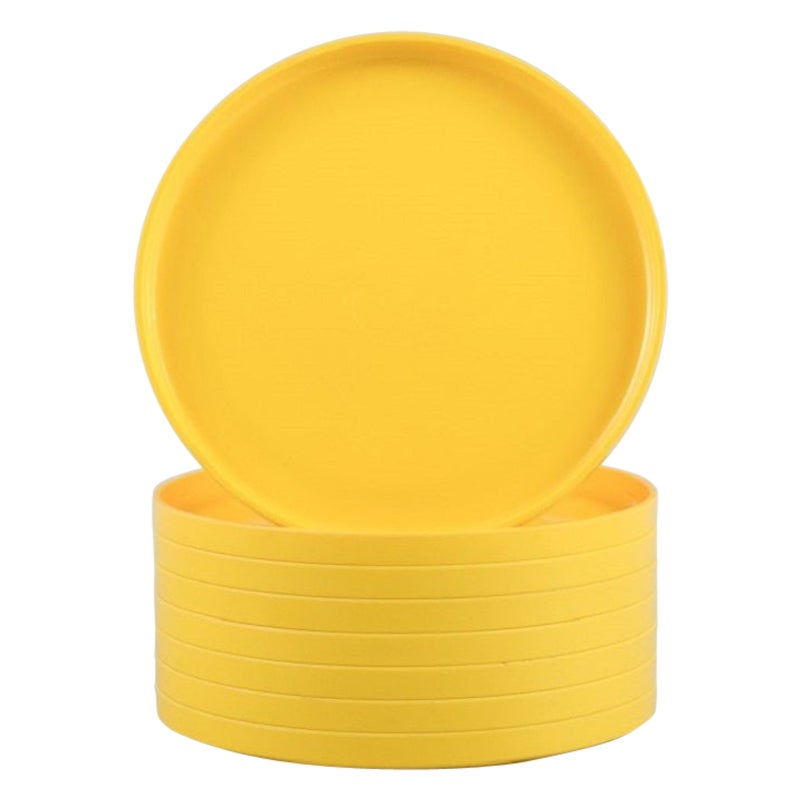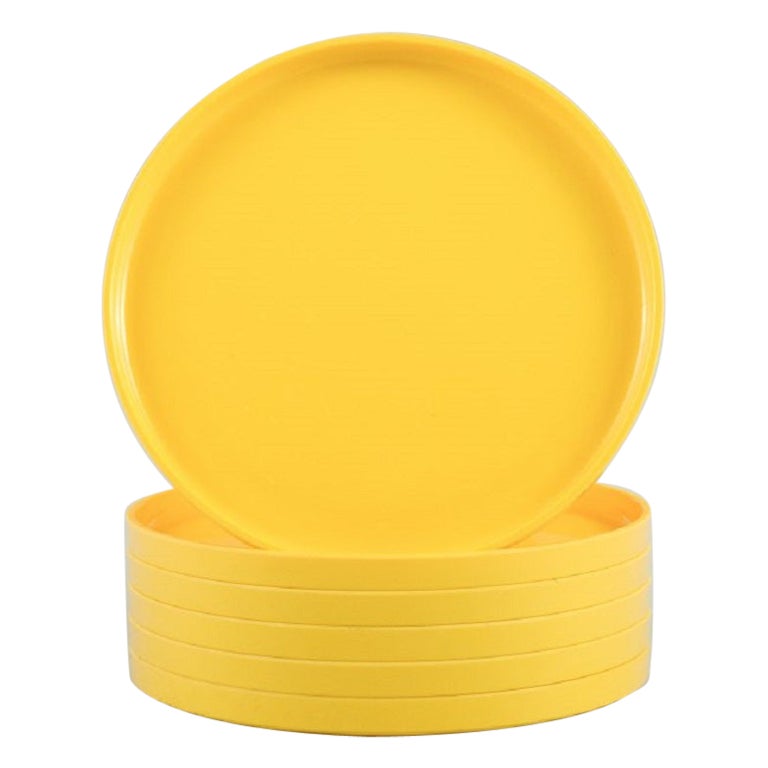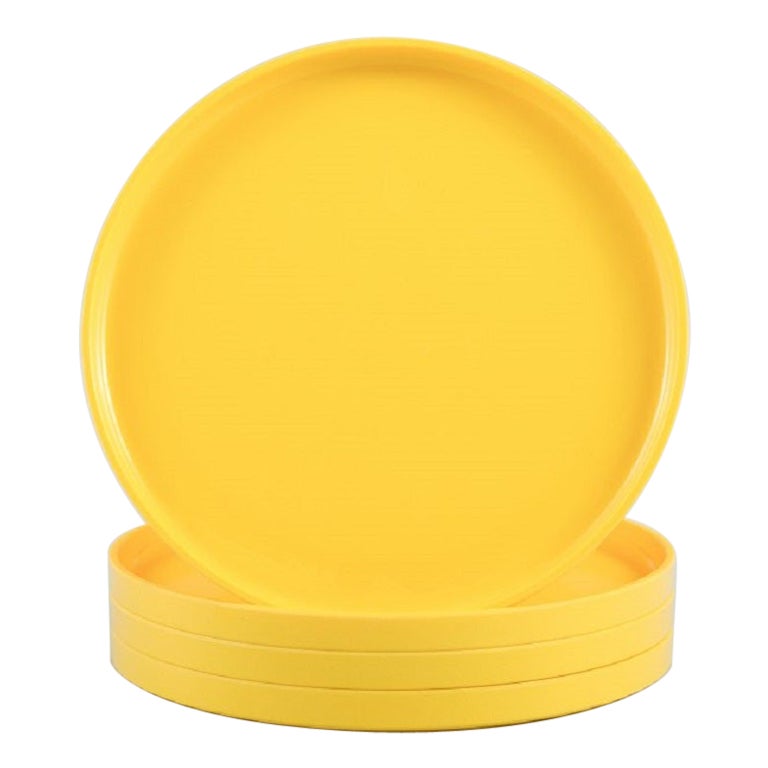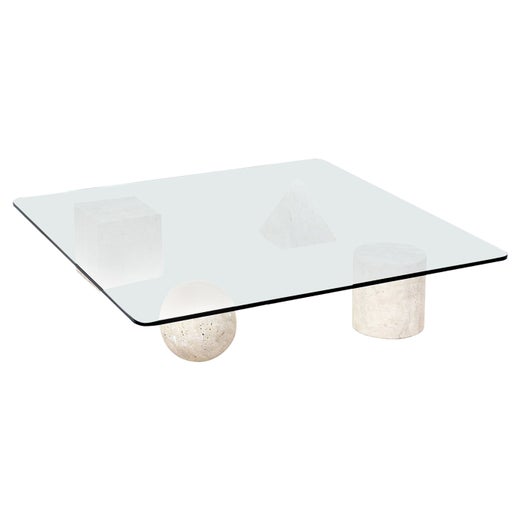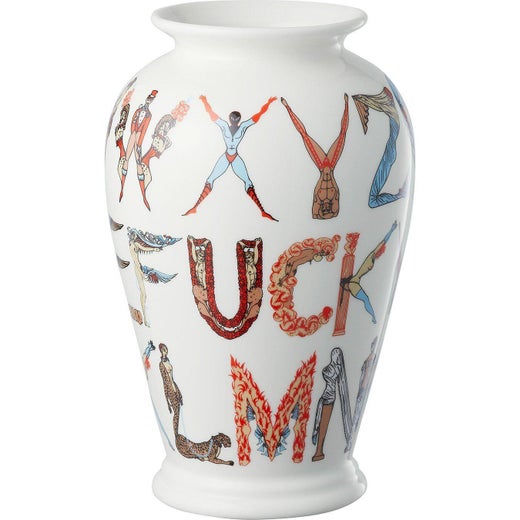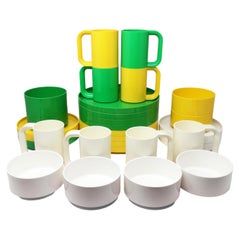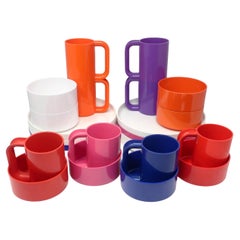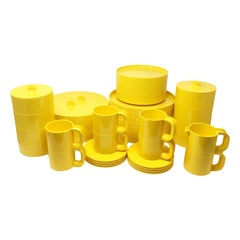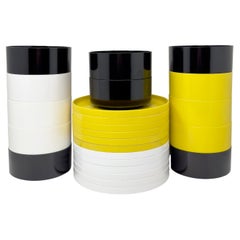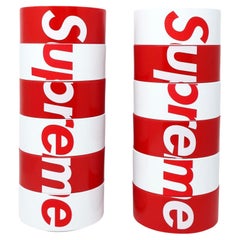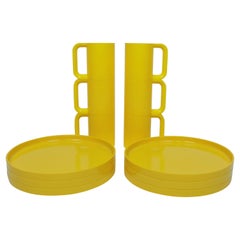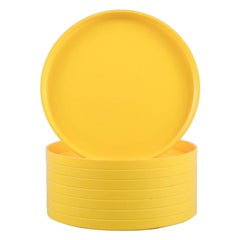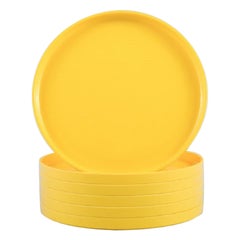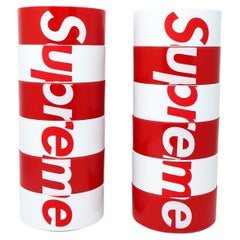
Red & White Supreme Bowls by Vignelli for Heller, Set of 12
View Similar Items
Red & White Supreme Bowls by Vignelli for Heller, Set of 12
About the Item
- Creator:
- Dimensions:Height: 2.25 in (5.72 cm)Width: 5 in (12.7 cm)Depth: 5 in (12.7 cm)
- Sold As:Set of 12
- Style:Modern (Of the Period)
- Materials and Techniques:
- Period:
- Date of Manufacture:2023
- Condition:
- Seller Location:Brooklyn, NY
- Reference Number:1stDibs: LU1546234389252
Massimo and Lella Vignelli
Massimo Vignelli and Lella Vignelli’s legacy can be seen everywhere in the logos of Bloomingdale’s, Ford and American Airlines, among others. In addition to their work in branding, they were prolific creators of modernist home furnishings, products and interiors, and the duo’s collaborations, which span 50 years, have left a profound mark on design and wider visual culture.
After meeting in Italy, Lella (1934–2016) and Massimo (1931–2014) began working together in 1961 and a decade later formed Vignelli Associates in New York. A self-described “information architect,” Massimo was committed to streamlining complex ideas into clear, visually arresting forms. (Witness the graphic identity that he cocreated with Bob Noorda for the New York City Transit Authority as well as his influential 1972 subway map.) The Vignellis’ most recognizable piece, for example, may be the Handkerchief chair, a stackable office chair made of compression-molded plastic that has the look of a cloth floating in air. It was created for Knoll in 1983 after they designed the brand’s logo.
Evidence of the couple’s influence can also be found in their Saratoga line (1964), the first collection of lacquered furniture, which helped herald in the trendy “glossy” look of the decade (and beyond). When the Vignellis created the Poltrona Frau Interview chair in 1988 for an Italian television station, it became widely sought after, “which goes to show you the power of the TV media,” the couple once said. Much like their elemental graphic designs, the Kono (1984) and Pisa tables (1985) — both created for Casigliani — cull the form of the table down to geometric shapes.
Vignelli furniture is often labeled as Massimo Vignelli’s alone, though he fought to have Lella recognized for her work, even throwing away magazines that neglected to give her due credit. As he wrote of their lifelong collaboration in his book Designed By: Lella Vignelli: “It is not holding a pencil with four hands that makes a partnership; it is sharing the creative act and exercising creative criticism which is reflected in the end result.”
Find vintage Massimo and Lella Vignelli seating, tables and other furniture today on 1stDibs.
Supreme
Supreme’s ascent from neighborhood cult favorite to auction star is a master class in brand marketing, based on creating hard-to-build desire. Launched in New York City in 1994, the iconic streetwear brand with a subversive attitude has attracted a following that ranges from downtown skaters to fashion's elite.
After a short-lived stint as a salesman for downtown Manhattan store Parachute and running a Stüssy branch as well as his own retail outlet, Union, British ex-pat James Jebbia opened Supreme, “the cool, cool shop … no big brands or anything.” The founder and director sold skateboards and sneakers, beanies, tees and hoodies while movies like Mean Streets and loud hip-hop played in the background, attracting a young downtown crowd of skateboarders, artists and entrepreneurs who found the store’s counterculture ethos appealing.
With success came brand collaborations big and small — all tightly controlled by Jebbia, who is renowned for unfailing business instincts — ensuring waiting lists and lines at new product launches. A 2012 partnership with Comme des Garçons brought Supreme avant-garde fashion followers with deeper pockets.
“I don’t think enough people take risks, and when you do, people respond — in music, in art, in fashion,” Jebbia told Vogue. He seemed to be taking a risk working with big brands. But although some fans accused him of selling out with Supreme’s Fall/Winter 2017 collaboration with Louis Vuitton, most did not, including the winning bidder for the Malle trunk at Christie’s.
A curated “Artist Series” of Supreme skate decks was inaugurated in 2001 when the then-not-so-famous street artist KAWS, aka Brian Donnelly, designed his Chum boards, a pair of which, signed, went for $32,000, four times their estimate, at the “Handbags X Hype” sale. The series now includes creations by Cindy Sherman, Nan Goldin, Damien Hirst, the Chapman Brothers and George Condo.
Find Supreme shirts, hoodies, jackets and other clothing and accessories on 1stDibs.
More From This Seller
View AllLate 20th Century Mid-Century Modern Dinner Plates
Plastic
Late 20th Century Post-Modern Dinner Plates
Plastic
Late 20th Century Post-Modern Dinner Plates
Plastic
Mid-20th Century Post-Modern Dinner Plates
Plastic
Late 20th Century Post-Modern Dinner Plates
Plastic
Late 20th Century Post-Modern Dinner Plates
Plastic
You May Also Like
21st Century and Contemporary Canadian Serving Bowls
Plastic
Vintage 1970s American Mid-Century Modern Tableware
Plastic
Vintage 1970s Italian Mid-Century Modern Tableware
Other
Vintage 1970s Italian Mid-Century Modern Tableware
Other
Vintage 1970s Italian Mid-Century Modern Tableware
Other
Vintage 1970s Italian Mid-Century Modern Tableware
Other
